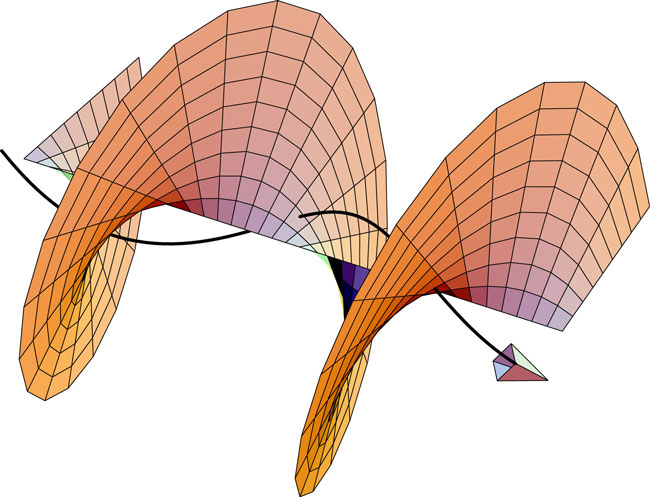Explanation: Light is more complicated than we thought. When astronomers measure light, they are usually concerned with its direction, energy, and spin polarization (sometimes). Recently, however, it has been more broadly realized that photons can also have orbital angular momentum (OAM), an attribute classically analogous to the Earth orbiting the Sun as well as spinning on its axis. Pictured above, the wave-front of a photon with OAM is shown to be twisted, in contrast to the flat plane of zero OAM light. Light with OAM might be used to increase the information content of communication or to discern specific types of astronomical sources. Passing through a common lens, light without OAM focuses to a point, whereas light with OAM focuses to a ring. Most light bouncing around the cosmos, however, is expected to have so little (or zero) OAM that the created ring is too small to measure. Even given other promising methods for measurement, exploiting OAM for astronomical discovery might be as much an issue of observational practicality as theoretical possibility.
APOD Update:
APOD mirror now on-line from Poland with archive in Polish.
1999 2000 2001 2002 2003 2004 2005 2006 2007 2008 2009 2010 2011 2012 2013 2014 2015 2016 2017 2018 2019 2020 2021 2022 2023 2024 2025 |
Yanvar' Fevral' Mart Aprel' Mai Iyun' Iyul' Avgust Sentyabr' Oktyabr' Noyabr' Dekabr' |
NASA Web Site Statements, Warnings, and Disclaimers
NASA Official: Jay Norris. Specific rights apply.
A service of: LHEA at NASA / GSFC
& Michigan Tech. U.
